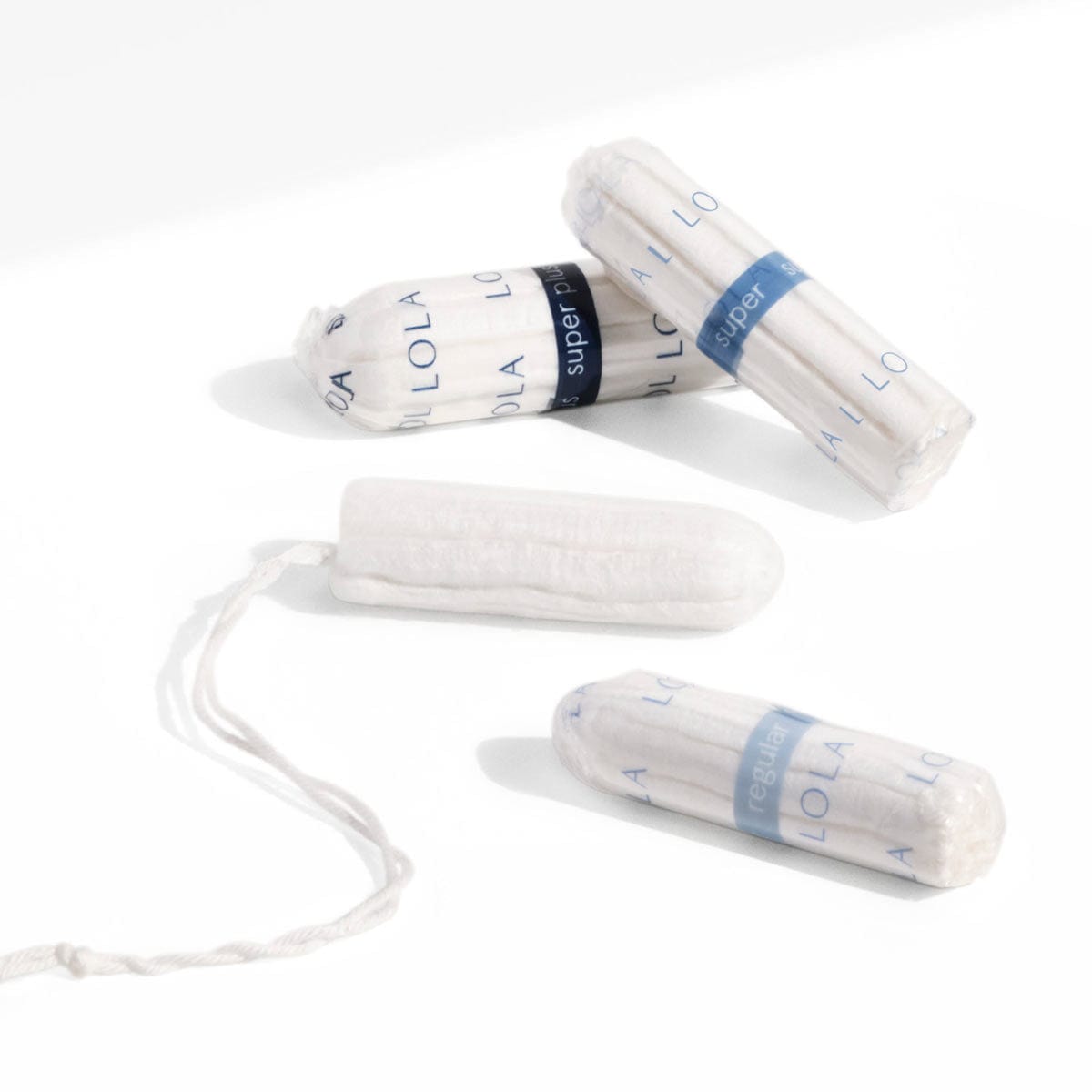Have you heard of Sha-Asia Washington? She is"was"a 26-year-old Black woman who passed away during an emergency C-section. Her death is one of the latest reflecting the disturbingly high rates of maternal mortality among Black women.
While I didn't know Sha-Asia Washington, the issue of high maternal mortality rates in Black women has hit heartbreakingly close to home for me. There are no words to describe the cruelty of a mother losing her life in efforts to bring forth a new one.
Unfortunately, maternal deaths aren't the only reproductive issues that affect Black women more than women of other races. We'll begin part one of this three-part series by taking a hard look at racial disparities in women's health"particularly, in Black women's reproductive health. In part two, we'll aim for a better understanding of why these disparities exist.
Truthfully, as one of the Black women who are so disproportionately affected, I can tell you these conversations sometimes weigh us down with even more stress and anxiety. So in part three, we'll shift our attention to strategies and resources Black women can use to advocate for their reproductive health and navigate the US health system as safely as possible.
What reproductive health problems are more likely to impact Black women?
My closest friends and I are all Black women in our 30s. I speak for all of us when I say as young girls, we had no idea the odds we would be up against as Black women of reproductive age. Now, we know better.
But we can't fight for progress without first understanding exactly what's happening: what the issues are, and what's causing them. So let's start by taking a look at the landscape of reproductive health for Black women.
Black women and infertility
There are lots of technical definitions of infertility, but in this case, we'll define it as requiring more than 12 months of consistent attempts before conceiving a child. With this definition in mind, data tells us that 7% of white women experience infertility, while 12% of Black women do.
Why this difference? Black women are more prone to have many of the risk factors for infertility, like obesity and uterine fibroids (which we'll talk about in more detail later). Black women also have endometriosis as often as white women do, but are half as likely to be diagnosed. Endometriosis is one of the leading causes of infertility.
Not only does a disparity exist for infertility status, it also exists for infertility treatment. Even though Black women are twice as likely to struggle with infertility, they're half as likely to seek medical help for it.
Despite several high-profile women like Michelle Obama, Gabrielle Union, and Tia Mowry speaking out about their fertility struggles, Black women as a whole are largely quiet about their individual experiences with infertility. There's a great deal of social stigma around infertility in Black communities, and many women end up suffering in silence and going without treatment because of it.
Even in cases where Black women do seek help, the cost of infertility treatment -sometimes upwards of $30,000 - can be a significant barrier. This is especially true considering that Black women are more likely to be in a lower socioeconomic status than their white woman peers.
Black women and unintended pregnancy
About half of all pregnancies in the US are unintended, where women either didn't want to get pregnant at all, or at least not at that particular time. The lowest rates of unintended pregnancy, which happen to be for white women, are 42%. But when you look at the data for Black women, 69% of pregnancies are unintended. This difference holds true across all income levels.
Unequal access to long-acting, reversible birth control options like IUDs and implants can influence rates of unintended pregnancy. And Black women are more likely to go without these resources because we're more likely to be uninsured or underinsured.
Also, unintended pregnancies that end in childbirth can easily strain women's physiological, psychological, and financial resources, increasing the likelihood of poor health outcomes later down the road for the mothers and children.
Black women and maternal mortality
Statistics around maternal mortality are some of the most sobering you can find. Maternal mortality describes the death of a woman within 42 days of the pregnancy's end. You may also hear the term pregnancy-related death, a death that occurs within one year of the pregnancy's end. In both cases, the death must be related to pregnancy.
Black women experience the highest maternal mortality rate of all races. We are 2.5 times as likely to die shortly before, during, or shortly after childbirth than white women. If we look at pregnancy-related deaths, Black women are 3-4 times as likely to die.
Why is this disparity so stark, especially when according to the CDC, most pregnancy-related deaths are preventable? Well, it's true that Black women are more likely to have underlying chronic health conditions like heart disease and high blood pressure, which contribute to pregnancy-related deaths. But research shows that almost all cases of pregnancy-related deaths from 2006 to 2017 were caused by several contributing factors, such as access to high-quality medical care, delayed or overlooked diagnoses, and missed warning signs. This shows that the issue is incredibly complex and must be addressed on multiple levels.
Black women and fetal mortality
Black mothers are not the only ones with a greater chance of serious issues during and after pregnancy. So are our fetuses.
Fetal death rates in women who are at least 20 weeks pregnant are more than twice as high in Black women as they are in white women. In 2013, the fetal death rate in Black women was 11%, compared to 5% for white women.
Except for chromosomal abnormalities, which are one of the leading causes of fetal death for white women, Black and white women share similar causes of fetal death. Two of those shared causes - maternal complications related to and unrelated to pregnancy - might help explain why Black women suffer from fetal death more often.
We've already seen that Black women are more likely to have health conditions that can negatively impact a pregnancy, like obesity, endometriosis, uterine fibroids, and chronic diseases. Those patterns don't just increase our risk of maternal mortality, but also of fetal mortality.
Black women and uterine fibroids
Both Black and white women are at high risk for uterine fibroids, but they warrant their own discussion here because how much more seriously they impact Black women.
A fibroid is a tumor that's usually not cancerous. That may seem like a relief for the many women who will develop fibroids during their lifetimes. But actually, fibroids are the leading cause of hysterectomies"removal of the uterus. And data shows that Black women are disproportionately impacted by uterine fibroids. About 80% of Black women develop uterine fibroids by the time we turn 50 years old, compared to about 70% of white women.
Not everyone who gets fibroids has symptoms, but Black women are more likely to. This pattern, plus the fact that Black women are more likely to be diagnosed with uterine fibroids at younger ages, mean surgical treatment happens more often. Black women with fibroids are more than 3 times as likely to be hospitalized, 7 times as likely to have fibroid removal surgery, and 2-3 times as likely to receive a hysterectomy, compared to white women with fibroids.
Unfortunately, risk of complications post-fibroid removal surgery is also higher amongst Black women. Researchers believe this may be because Black women tend to have more and larger uterine fibroids.
So what's responsible for these discrepancies? Unfortunately, research is lacking, but one study hints at vitamin D insufficiency as a possible link. Since women with darker skin don't naturally produce as much vitamin D, it could be linked to increased fibroid risk.
Although uterine fibroids aren't cancerous, they can cause dire complications. The presence of fibroids during pregnancy doubles the risk of miscarriage during the first trimester, and C-section rates are much higher too.
Black women and breast and cervical cancer mortality
Even though white women are more likely to be diagnosed with breast cancer, Black women die from it more often. Trends from 2013 to 2017 show that for every 20 white women who died from breast cancer, about 28 Black women died. That makes Black women 40% more likely to die from breast cancer than white women.
This pattern has not only held true for years, but has actually gotten worse. And while the number of women dying from breast cancer overall has been slowly decreasing, the racial disparity between breast cancer deaths has not closed.
Black women develop breast cancer at younger ages. And they're more often affected by a notoriously difficult-to-treat form of the disease: triple-negative breast cancer.
It turns out that breast cancer isn't the only reproductive cancer where Black women fare worse. Like breast cancer, Black women are also about 40% more likely to die from cervical cancer than white women are. Also, cervical cancer rates (16) are higher in Black women than women of any race, including white women.
One of the most important factors contributing to these disparities is the difference in access to adequate healthcare, including preventive services such as mammograms and Pap smears. Given that a larger percentage of Black women live in under-resourced areas, the benefit of early diagnosis and rapid treatment at an early cancer stage is often missed. This results in women who are screened less often and later. And by the time screening happens, the cancer has progressed to a later stage.
Black women and sexually transmitted diseases (STDs)
Sexually transmitted diseases (STDs) like gonorrhea, chlamydia, and syphilis occur more often among Black women. Specifically, Black women have more than 8 times as many gonorrhea cases, 5 times as many chlamydia cases, and 4.5 times as many syphilis cases as white women.
CDC researchers don't believe these disparities exist to such a degree because of individual behaviors and actions. Rather, they reflect deeply ingrained systemic issues within the US healthcare system, particularly in regards to STD prevention, diagnosis, and treatment.
Black women and HIV/AIDS
While the greatest burden of HIV and AIDS falls upon Black men, heterosexual Black women bear the weight of new cases. In 2016, 6 out of 10 new HIV diagnoses were in Black women, and about 60% of all women with HIV are Black. Unfortunately, many of the HIV prevention initiatives that have worked well in other communities have not had the same impact on Black women.
Black women face numerous challenges when it comes to this disease. Given that people are naturally more likely to have sexual relationships within similar communities, the fact that HIV is more widespread in Black communities compared to communities of other races is a disadvantage for Black women. There's also the social stigma associated with HIV, which is a factor that keeps many Black women from getting tested and getting treatment if they have a positive diagnosis. Of course, there are other socioeconomic factors too.
From infertility to uterine fibroids to STDs: after looking at the specific reproductive health conditions Black women disproportionately face, it's clear how complex some of these disparities truly are. Stay tuned for the next part of the series, where we'll talk more about why these disparities exist - and steps society can take to work toward equity in reproductive health
References:
- https://www.acog.org/-/media/project/acog/acogorg/clinical/files/committee-opinion/articles/2015/12/racial-and-ethnic-disparities-in-obstetrics-and-gynecology.pdf
- https://www.contemporaryobgyn.net/view/how-raceethnicity-influences-endometriosis
- https://pubmed.ncbi.nlm.nih.gov/16580365/
- https://www.ncbi.nlm.nih.gov/pmc/articles/PMC2592196/
- https://www.ncbi.nlm.nih.gov/pmc/articles/PMC4630798/pdf/nihms-715550.pdf
- https://www.apa.org/pi/ses/resources/publications/factsheet-erm.pdf
- https://www.ncbi.nlm.nih.gov/pmc/articles/PMC4011100/
- https://journals.lww.com/greenjournal/Fulltext/2020/04000/Racial_and_Ethnic_Disparities_in_Perinatal.20.aspx
- https://www.cdc.gov/nchs/pressroom/nchs_press_releases/2020/202001_MMR.htm
- https://pubmed.ncbi.nlm.nih.gov/31071074/
- https://pubmed.ncbi.nlm.nih.gov/26222771/
- https://www.cdc.gov/nchs/data/nvsr/nvsr69/nvsr69-04-508.pdf
- https://www.ncbi.nlm.nih.gov/pmc/articles/PMC3874080/pdf/nihms-515154.pdf
- https://www.ncbi.nlm.nih.gov/pmc/articles/PMC5330388/
- https://acsjournals.onlinelibrary.wiley.com/doi/10.1002/cncr.32802
- https://www.cdc.gov/cancer/dcpc/research/articles/breast_cancer_rates_women.htm
- https://www.bcrf.org/blog/why-black-women-are-more-likely-die-breast-cancer
- https://www.cdc.gov/cancer/hpv/statistics/race.htm
- https://www.cdc.gov/nchhstp/healthdisparities/africanamericans.html
- https://www.cdc.gov/std/stats17/minorities.htm
- https://www.nbcnews.com/health/womens-health/hiv-hits-black-women-hardest-cdc-report-says-n1003891
- https://www.cdc.gov/nchhstp/newsroom/docs/factsheets/cdc-hiv-aa-508.pdf
- https://www.cdc.gov/nchhstp/healthdisparities/africanamericans.html













